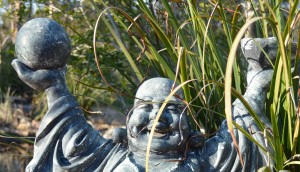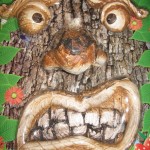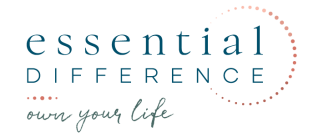MIND*FUL*NESS
What does Mindfulness mean?
Well that depends on who you ask? Interpretations on any topic can be varied so I started my quest for research by asking my children for their input, who answered:
- Focusing, understanding and staying on task
- Thinking of what you are going to do before you do it
Mindfulness
2. A mental state achieved by focusing one’s awareness on the present moment, while calmly acknowledging and accepting one’s feelings, thoughts, and bodily sensations, used as a therapeutic technique.
Oxford Dictionary
Cultures such as Buddhism, Taoism and Yoga intricately weave Mindfulness in their practises and its being used more and more in our Western society. “Jon Kabat-Zinn, a world authority on the use of mindfulness training in the management of clinical problems, defines it as ‘paying attention in a particular way: on purpose, in the present moment, and non-judgmentally. It is the art of conscious living'”.
Dr Russ Harris, M.B.B.S
http://www.thehappinesstrap.com/mindfulness
 Our brain is masterful in applying many diversions, contradictions, persuasions, resistances and more! So paying attention deliberately on the present is a real practise not unlike Yoga. You start off by practising Mindfulness weekly, then increasing it to daily and hopefully, practising more often during the day!
Our brain is masterful in applying many diversions, contradictions, persuasions, resistances and more! So paying attention deliberately on the present is a real practise not unlike Yoga. You start off by practising Mindfulness weekly, then increasing it to daily and hopefully, practising more often during the day!
Applying Mindfulness
Appreciating what Mindfulness is, is all well and good – however when do you actually apply it and how does it apply to your everyday living in working hours or at home? How can you apply it during the chaos of a school morning or while responding to a long list of emails and returning phone call all at the same time while being interrupted with questions?
Have you ever experienced when driving you can’t remember the last 5km? If you answered yes….then where were you while you were on auto-pilot? It is as if the mind and body were working separately from each other focusing on different tasks, rather than working together in the present.
I have donated copious amounts of time in thought to many things (useful or not) and it feels like they are all occurring at once! An enormous amount of time is devoted to thinking. Hundreds of thoughts overlap, playing re-runs of actions or events which have already occurred or might occur in the future. All of these thoughts are past or future thoughts – not present!
 While our mind is occupied creating elaborate films, lists and details; our bodies are quietly responding. Similar to when you watch a movie and during different scenes your body is responding without you even noticing. Perhaps you hold your breath and tense your muscles. You may laugh, cry or sigh and pull facial expressions, etc! Perhaps blood pressure has changed, experiencing nervous tension or shallow breath. You may find you feel more emotional than ‘normal’.
While our mind is occupied creating elaborate films, lists and details; our bodies are quietly responding. Similar to when you watch a movie and during different scenes your body is responding without you even noticing. Perhaps you hold your breath and tense your muscles. You may laugh, cry or sigh and pull facial expressions, etc! Perhaps blood pressure has changed, experiencing nervous tension or shallow breath. You may find you feel more emotional than ‘normal’.
Have you observed how this may play out in the rest of your day? Are you reactive to situations that otherwise wouldn’t bother you? Do you go about your day quietly? Become easily frustrated? Do the emotions you feel and behaviour affect others around you? If your state of mind and body are being affected then it is simply ineffective and stressful! So how can you break the chaos?
Mindfulness or Presence can be applied in anything you do and at any time and really beneficial in those times of escalating stress and frustration. It is the art of consciously focusing on the present activity without giving thought to anything else. You can apply this technique even when doing the dishes! By focusing on each action you take during the activity slows the countless thoughts and internal chaos. Even going for a walk! Focusing on each step you take, how each leg moves in front of the next; draws your mind to the present moment!
Activity Using Mindfulness
Here’s an activity you can do right now! Take a moment and draw your focus to your body. Draw your attention to the different parts of your body.
If you are sitting – notice what parts of your body are connecting to the floor and to the chair. Continuing to focus with your mind, focus on your bottom, your hamstrings, back, feet and other areas of your body that are connecting to the chair and floor. Observe how your head is balancing on your neck and shoulders and notice your breath without changing it; simply notice.
If you are standing – notice the amount of pressure in your feet holding your body upright. Notice how your feet stand on the ground and notice the weight distribution across both sides of your body without changing it. Do you feel balanced? Notice how your arms hang by your sides, how your head is positioned and how your body breathes?
Did you notice your body, breath and mind settle and relax? These types of exercises using mindfulness will help you ‘pay attention in the present moment’, deliberately giving your brain one thing to focus on while eliminating the random internal brain buzz!
 Mindfulness or Presence can be applied at any given point – by drawing attention to the present. You can focus on your breath by observing how air moves in and out of the body or by focusing on the task your are doing. Remember ‘less is more’. Experiment and have fun being Present and simply practise Mindfulness as often as your can to become comfortable in its use.
Mindfulness or Presence can be applied at any given point – by drawing attention to the present. You can focus on your breath by observing how air moves in and out of the body or by focusing on the task your are doing. Remember ‘less is more’. Experiment and have fun being Present and simply practise Mindfulness as often as your can to become comfortable in its use.
xo Rosetta
 Chia Seed Chocolate Cake that’s eggless! Want the recipe?
Chia Seed Chocolate Cake that’s eggless! Want the recipe?

